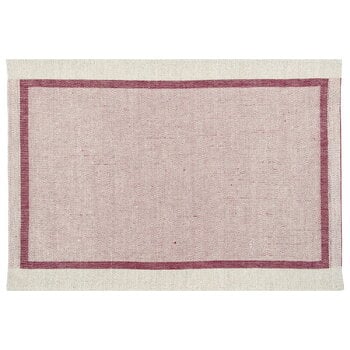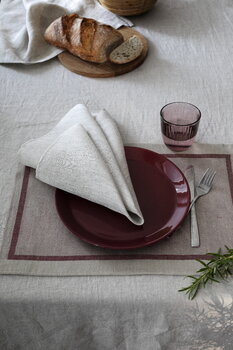The Laina placemat from Lapuan Kankurit is decorated with a simple dark red box that underlines each diner's space at the table. Designed by Elina Helenius, the placemat embodies the understated beauty of traditional linen weaving, yet with an added decidedly modern touch.
The Laina placemat has been woven from 100% linen in the town of Lapua, Finland. Did you know that the brand name Lapuan Kankurit literally translates to "weavers of Lapua"?








